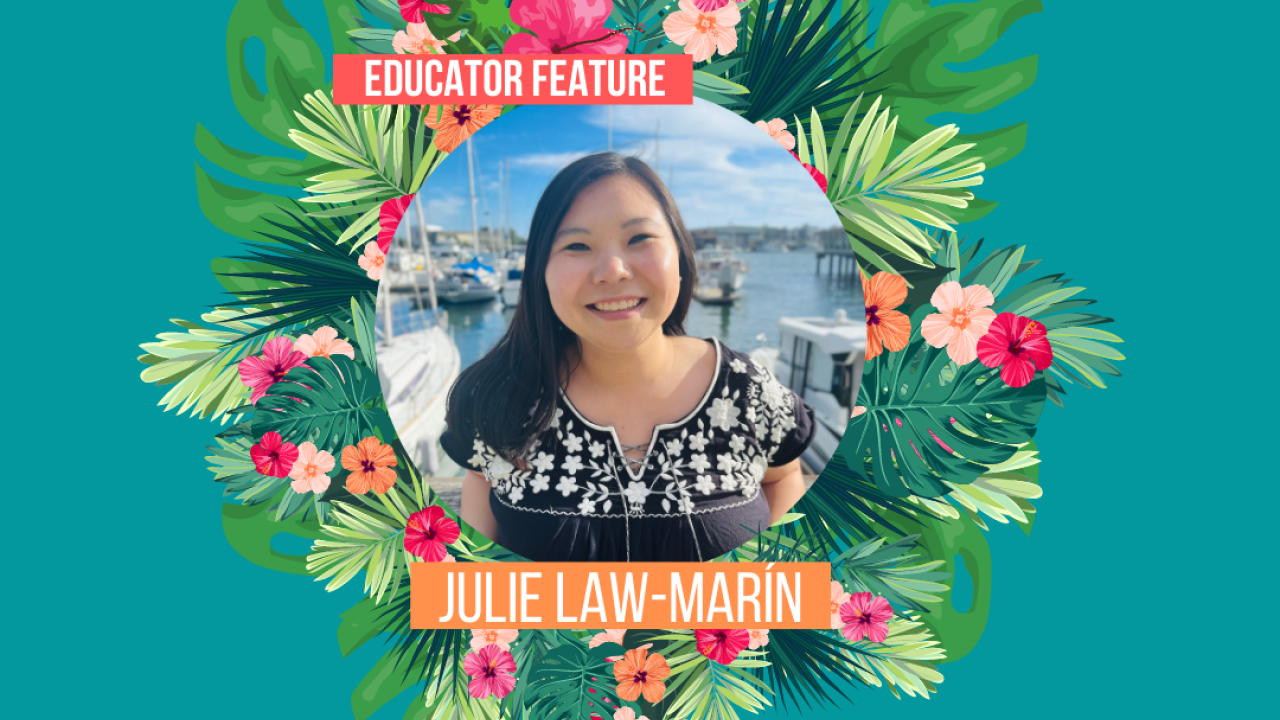
Educator Feature: Julie Law-Marín
Culturally-Responsive Teaching in High School
Quick Summary
- High School educator offers expertise to implement Culturally-Responsive Teaching for older students
Julie Law-Marín is a high school educator in the Sacramento area. She earned her Bachelor of Arts in History with a minor in Asian American Studies; she continued on to earn her Master of Arts degree in Education with a concentration on Multicultural Education. She kindly sat down with us to offer her expertise on culturally-responsive classroom practices and community based teaching. Below are her responses to the questions we asked her.
What does culturally-responsive teaching mean to you?
Students approach me and say that they have appreciated me being their teacher because they never had a teacher who looked like them, nor had one who could relate to being bilingual, dealt with the model minority myths, or related to family cultural expectations and values. I recognize the need to show that Asian Americans educators exist within our schools and that we are creating culturally responsive systems. Instead of shame, these systems empower students to take pride in their heritage. As a kid, I was self-conscious about speaking Cantonese in public. I remember people would ask me to say random words to prove I could do it. I was frustrated at having to perform my ethnicity. Now I have had the privilege of being able to translate and communicate directly with families in Cantonese and help them advocate for their student’s needs.
Asian Americans and Pacific Islanders comprise a beautiful and diverse set of cultures. We are anything but monolithic and have a vast array of economic, generational, linguistic, and social experiences. Failing to see our diversity minimizes what our individual identities can bring to the table. Please take the time to research and learn throughout the year: there is a growing library of work out there hoping to capture hearts and minds. At the bottom of this page are a list of resources.
What does culturally-responsive teaching look like in practice?
Culturally responsive teaching starts with us. As educators, we can begin by looking at our courses and tap into our own unique experiences and world views by asking, “what are my strengths and where might I need to lean on colleagues to learn more, research more, or even seek out Professional Development to address questions?” Then consider how our students contribute to the classroom curriculum and environment. Students’ experiences, cultures, and perspectives are assets by which to learn about historical experiences.
While the course may have standards and frameworks, culturally responsive teaching allows educators to create meaningful and relevant ways for the student to apply subject matter to their understanding of the world and its structures. In my classroom, Community Circles are an excellent and approachable starting point to have students share their experiences in a space that allows them to practice appreciating each others’ differences and honoring similar experiences. A prompt in the beginning might simply ask, "What kind of rice do you eat and how is it prepared?" This framing helps students break down assumptions of one another and consider where they connect. This initiation to inquiry can be followed up with a lesson that touches on themes within their conversation.
What does community-based teaching mean/look like to you/ in practice?
Integrating the community into my practice has been helpful to create a culturally-responsive classroom. Educators can begin to build networks with communities by looking at social media (Twitter and Instagram offer a lot!). I found resources and contacts that opened doors to learn more about other groups and how they can work with my students. In my Ethnic Studies group, I am exploring how to include ethnic enclaves as social spaces and resource hubs– starting with Chinatowns and Japantowns. As we discussed the decline of some of the enclaves, the students recognized the loss of rich cultural narratives, perhaps similar to the ones that they hold valuable at home.
Community-based teaching centers the student learning experience. Students bring in their personal experiences and consider how their education can support their community. Moreover, it means having the educators collaborate with community partners and allow their guidance to contribute to the classroom. If you are not sure who your community partners are, start out by asking your students for recommendations, and ask colleagues or families to see what knowledge and connections they have.
This educator feature is part of Asian American and Pacific Islander History Month. You can learn more about Asian American and Pacific Islander History by visiting our Monthly Highlights Page for classroom lessons, recent scholarly work, and other resources. For an educator's insight to culturally responsive teaching in K-5 classrooms, click here.
